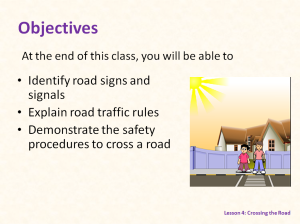This happened about a month back at my CIDTT class. We were given an activity to find out errors in different types of presentations. As my luck would have it, I received a PowerPoint slide to examine which looked something like this:
Well… My question to the class was:
What’s right about this?
The entire group, including my instructor, was bewildered by my question. They said that there was nothing wrong with it. In fact they went on saying that it is an excellent presentation as it used a visual of a plant. Visuals are good… But not this one!
For the next 10 odd minutes, I explained to them as to how the slide would fail with the learners, with respect to the quality of the graphics, colour, placement, size, and typeface of the labels and the definition (in case you missed the definition, it is at the bottom right of the slide).
One of them (a teacher assistant) raised her hand and asked me whether all this is a real big deal. According to her, as long as the slide had the information in it, it must be effective with the learners. During tea break, I realized that a lot of other teachers in the group shared her view. Their collective questions were:
Do we really need to focus on the design a PowerPoint? Isn’t content more important?
Isn’t it enough if we just collect the information and pictures and display them to the learners? Isn’t that what PowerPoint is for?
We are going to explain all of it to them anyway right?
Well, my answer would be: If you don’t want to design them, get e-books. At least all the “information” you wish to convey is presented in a logical and a readable manner (to some extent, at least). For all those who disagree with me, I recommend you to read Beyond Bullet Points by Cliff Atkinson and Slideology by Nancy Duarte. If you still disagree with me, feel free to post your views under the comments section.






